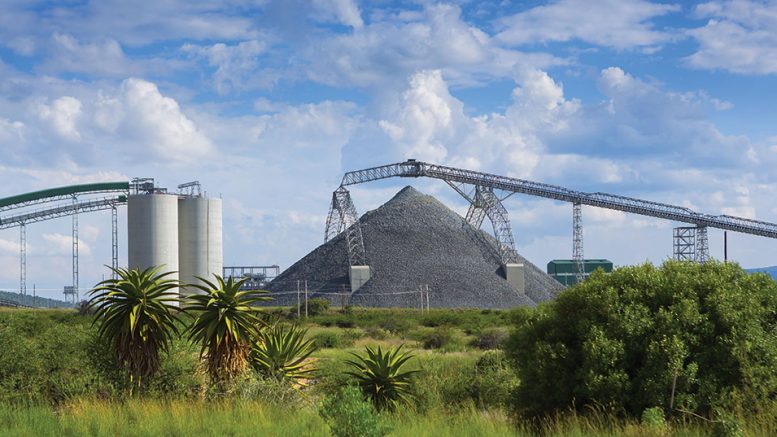Rhodium is an irreplaceable material for complying with carbon emission standards in gasoline-powered vehicles, which consume almost all of its annual production. But while global auto sales declined in late 2018 and the first eight months of this year, rhodium spot prices soared to nearly double their 10-year high.
Manufacturing of carbon-emitting vehicles consumes 80% of rhodium production each year due to the metal’s unique ability to convert harmful nitrogen oxide (NOx) in vehicle emissions. Demand from these vehicles — working to comply with stringent emission limits — drive the price of rhodium. The prices are subject to fluctuations during times of even small mismatches between supply and demand, due to rhodium’s small production volumes. (Rhodium is a by-product of palladium and platinum mining.)
Yet, the global downturn in auto sales, paired with the broader economic impacts of the tariff battle between the U.S. and China, have not squashed rhodium spot prices.
The slide in auto sales has also overlapped with significant reductions in rhodium demand year-over-year in the chemical and glass industries, which consume much of the remaining 20% of annual production.
Nevertheless, rhodium prices climbed to US$5,400 per oz. by the end of September 2019. This is nearly double the 10-year high of US$2,975 per oz. and more than three times the 10-year average of US$1,627 per ounce.
The price increases were evident in major platinum group metal (PGM) producers Anglo American Platinum (Amplats) and Impala Platinum Holdings’ (Implats) recent financial statements. Rhodium made up just 6% of Amplats’ PGM production for the first half of 2019 but provided 15% of its revenue for the same period, according to its interim results. Those revenue figures were based on an average rhodium price of just US$2,846 per oz. in the first half of 2019 — roughly half of the current price.
Similarly, Implats’ fiscal year 2019 results, posted in September, showed major contributions from rhodium to its total revenue. The low-volume metal provided 14% and 17% of total PGM revenue at its two biggest mines, IRS and Impala, and up to 21% of revenue at its Two Rivers platinum mine, all of which are in South Africa. Again, these results were based on average spot prices of just US$2,568 per ounce.
The rhodium price increases over the past couple years were not entirely unexpected. Johnson Matthey, which monitors PGM markets, along with the major PGM producers, had anticipated increases in 2018 due to strong auto-sector demand, as carbon emission standards tightened and consumers in China, the European Union and the U.S. continued to buy new cars.
Auto demand expectations were so strong that, while the rhodium market was in surplus in 2018, prices had climbed to an eight-year high in December 2018, due to “higher forward purchasing from auto and industrial buyers,” Johnson Matthey said in its May 2019 “PGM Market Report.”
However, the 2018 trend looked ready to slow moving into 2019. Johnson Matthey reported that an increase in rhodium sales caused spot prices to retreat to US$$2,460 per oz. in the last days of 2018. And, by that time, China had already posted the most noteworthy of its disappointing auto sales results.
In mid-2018, China posted its first decline in internal combustion car sales in decades, and sales have declined year-over-year since then, according to the China Association of Automobile Manufacturers.
China has not been alone in facing declining vehicle sales. The European Automobile Manufacturers Association recently announced a 3.1% decline in EU sales for the first half of 2019 over the same period in 2018, and it found a similar decline in the U.S., with even bigger slides in India and South America.
Despite these ongoing auto sales declines, rhodium’s price climbed throughout 2019, far beyond what analysts and PGM producers had predicted. So, what is responsible for rhodium’s soaring prices in 2019? Ironically, it appears to be the struggling automobile market.
Most carbon emission standards in the world’s biggest auto markets have mandatory limits on NOx, but stringent carbon emission policies are due to take effect in two of the most important auto markets in the world — the EU and China — according to Johnson Matthey.
As of September, all passenger cars sold in Europe are required to meet the “Euro 6d-TEMP” standards, which require vehicles to show NOx and particle number emissions compliance in road and laboratory tests. The standards are tighter — and must be met for most of the vehicle’s lifetime — but it is the addition of road test requirements that really make rhodium more essential than ever before.
“Rhodium is an extremely effective catalyst for the conversion of NOx in the exhaust stream, and even small increases in rhodium content can result in a large improvement in catalyst performance [under emissions testing],” Johnson Matthey said in its May 2019 report. As the world’s most effective means of dealing with NOx in gasoline-powered vehicles, rhodium’s spot prices are being impacted in a big way by the EU’s new policies.
Meanwhile, China is set to implement its next round of carbon emission rules between 2020 and 2023. China’s new standard will “involve significantly higher palladium and rhodium loadings compared to the current” system, according to Johnson Matthey.
Johnson Matthey declined to comment on whether these new demand pressures per vehicle can offset declines in overall auto sales, but the current price of rhodium would seem to indicate that they are more than sufficient.
Implats appears to agree. The PGM producer said in its 2019 fiscal year results that, while it has made “downward revisions to its expectations in the medium-term” for auto sales, it expects to see “loadings [due to emission policies] offsetting volume declines” in the auto sector.
Not everyone is so down on the auto sector, indicating that near-term demand increases could put even more pressure on rhodium prices in 2020. Amplats stated in its 2019 interim results, posted in July, that tightening emission standards will increase demand in 2020 “as vehicle sales grow once again,” and said it expects that as a result “rhodium should move towards a deficit over the next few years.” (Implats reported that rhodium is already in a deficit in 2019. Johnson Matthey estimates rhodium is likely in a “technical surplus” again this year, as rhodium production appears more than sufficient to meet actual demand, but forward purchasers may move the market into a small deficit. No one has ventured specific estimates.)
At the same time, it may be that auto-sector buyers, whose forward-purchasing Johnson Matthey said drove up rhodium prices in 2018, are at it again in 2019, buying more rhodium than is currently usable in anticipation of the new standards in the EU and China. Johnson Matthey declined to comment.
Ongoing labour negotiations in South Africa — where the World Bank estimates 83% of known rhodium is located — may also contribute to buyers’ desire to squirrel away rhodium reserves. Slow progress appears to be on the horizon between the South African platinum mining union, Mineworkers and Construction Union, and major platinum producers in the country, but nothing is guaranteed in this ongoing matter.
For now, it seems rhodium will continue punching above its weight, providing more economic benefit to PGM producers than anyone expected.






Be the first to comment on "Rhodium punches above its weight with strong prices"